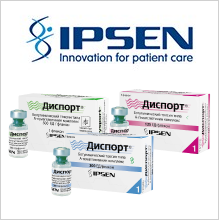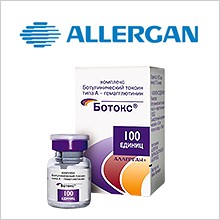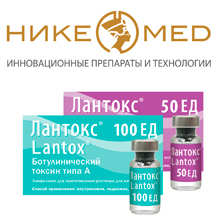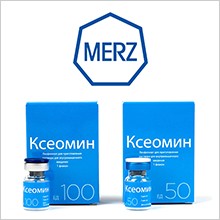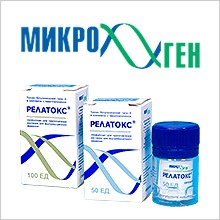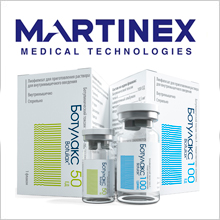Библиотека специалиста
Прошедшие Статьи
n|a
IncobotulinumtoxinA in aesthetics: Russian multidisciplinary expert consensus recommendations
On the basis of the scientific and clinical evidence available for incobotulinumtoxinA,
coupled with the extensive clinical experience of the consensus group, experts recommended
the optimal doses of incobotulinumtoxinA effective for treatment of wrinkles of the upper
and lower face to achieve the expected aesthetic outcome.
n|a
Консенсус по применению инкоботулотоксина
Представлен Консенсус по применению инкоботулотоксина А в
косметологической практике, принятый на заседании экспертного совета российских специалистов по ботулинотерапии (БТ).
Приведен анализ имеющихся на сегодняшний день международных консенсусов по БТ в отношении схем и доз применения
инкоботулотоксина А для коррекции морщин лица (отдельно
по верхней и нижней третям).
n|a
Оценка использования ботулинического токсина в лечении миофасциального болевого синдрома жевательных и височных мышц
The study revealed that BTX-A reduced the severity of symptoms and improve functional abilities for patients with MPS and these extend beyond its muscle - relaxing effects.
n|a
Peripherally induced oromandibular dystonia
Oromandibular dystonia (OMD) is a focal dystonia manifested by involuntary muscle contractions producing repetitive, patterned mouth, jaw, and tongue movements. Dystonia is usually idiopathic (primary), but in some cases it follows peripheral injury. Peripherally induced cervical and limb dystonia is well recognised, and the aim of this study was to characterise peripherally induced OMD. Methods—The following inclusion criteria were used for peripherally induced OMD: (1) the onset of the dystonia was within a few days or months (up to 1 year) after the injury; (2) the trauma was well documented by the patient’s history or a review of their medical and dental records; and (3) the onset of dystonia was anatomically related to the site of injury (facial and oral).
n|a
Disease-oriented approach to botulinum toxin use
Botulinum toxin (BoNT) has been used for over a quarter of century for the treatment of well over 100 different indications. Many of the symptoms for which BoNT has been found to be effective occur in a variety of neurological disorders. One neurodegenerative disorder in which BoNT has been used extensively to treat various symptoms is Parkinson’s disease (PD).
n|a
Botulinum toxins A and B
This Drug Policy is provided for informational purposes. It does not constitute medical advice.
n|a
Результаты исследования эффективности одного курса инъекций ботулинического токсина типа А у пациентов с постинсультной спастичностью верхней конечности ULIS-II: анализ российской подгруппы пациентов
Оценка эффективности лечения пациентов с применением инъекций ботулинического токсина типа А
(БТА) в условиях клинической практики.
n|a
Botulinum toxin: Non cosmetic and off-label dermatological uses
Botulinum toxin (BT-A) is a neurotoxin which is produced by the Gram-positive anaerobic bacterium Clostridium botulinum. The efficacy of Botulinum toxin in treating hyperhidrosis and the glabellar lines is well known and FDA approved.
n|a
Вестник МООСБТ №5
Ежеквартальное информационно-образовательное издание «Вестник ботулинотерапии МООСБТ».
n|a
«Российский журнал боли» №1 (26), 2010 г.
«Российский журнал боли» издается с 2010 г. при поддержке РОИБ и выходит с периодичностью четыре номера в год (один раз в три месяца). В каждом номере публикуются статьи авторов-соискателей ученой степени кандидата медицинских наук.

